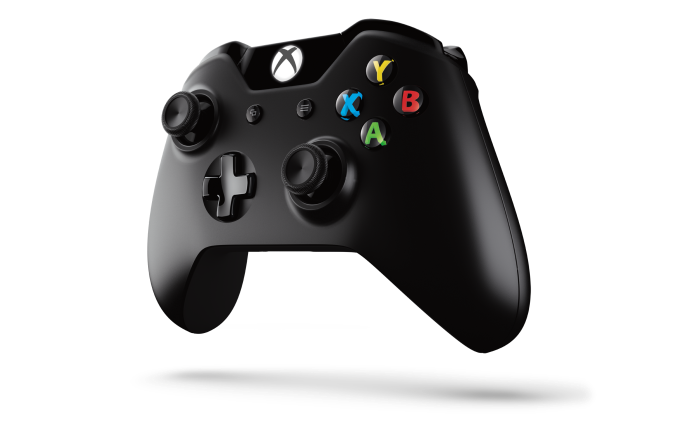The Xbox One: Hardware Analysis & Comparison to PlayStation 4
by Anand Lal Shimpi on May 22, 2013 8:00 AM ESTPower & Thermals
Microsoft made a point to focus on the Xbox One’s new power states during its introduction. Remember that when the Xbox 360 was introduced, power gating wasn’t present in any shipping CPU or GPU architectures. The Xbox One (and likely the PlayStation 4) can power gate unused CPU cores. AMD’s GCN architecture supports power gating, so I’d assume that parts of the GPU can be power gated as well. Dynamic frequency/voltage scaling is also supported. The result is that we should see a good dynamic range of power consumption on the Xbox One, compared to the Xbox 360’s more on/off nature.
AMD’s Jaguar is quite power efficient, capable of low single digit idle power so I would expect far lower idle power consumption than even the current slim Xbox 360 (50W would be easy, 20W should be doable for truly idle). Under heavy gaming load I’d expect to see higher power consumption than the current Xbox 360, but still less than the original 2005 Xbox 360.
Compared to the PlayStation 4, Microsoft should have the cooler running console under load. Fewer GPU ALUs and lower power memory don’t help with performance but do at least offer one side benefit.
OS
The Xbox One is powered by two independent OSes running on a custom version of Microsoft’s Hyper-V hypervisor. Microsoft made the hypervisor very lightweight, and created hard partitions of system resources for the two OSes that run on top of it: the Xbox OS and the Windows kernel.
The Xbox OS is used to play games, while the Windows kernel effectively handles all apps (as well as things like some of the processing for Kinect inputs). Since both OSes are just VMs on the same hypervisor, they are both running simultaneously all of the time, enabling seamless switching between the two. With much faster hardware and more cores (8 vs 3 in the Xbox 360), Microsoft can likely dedicate Xbox 360-like CPU performance to the Windows kernel while running games without any negative performance impact. Transitioning in/out of a game should be very quick thanks to this architecture. It makes a ton of sense.
Similarly, you can now multitask with apps. Microsoft enabled Windows 8-like multitasking where you can snap an app to one side of the screen while watching a video or playing a game on the other.
The hard partitioning of resources would be nice to know more about. The easiest thing would be to dedicate a Jaguar compute module to each OS, but that might end up being overkill for the Windows kernel and insufficient for some gaming workloads. I suspect ~1GB of system memory ends up being carved off for Windows.
Kinect & New Controller
All Xbox One consoles will ship with a bundled Kinect sensor. Game console accessories generally don’t do all that well if they’re optional. Kinect seemed to be the exception to the rule, but Microsoft is very focused on Kinect being a part of the Xbox going forward so integration here makes sense.
The One’s introduction was done entirely via Kinect enabled voice and gesture controls. You can even wake the Xbox One from a sleep state using voice (say “Xbox on”), leveraging Kinect and good power gating at the silicon level. You can use large two-hand pinch and stretch gestures to quickly move in and out of the One’s home screen.
The Kinect sensor itself is one of 5 semi-custom silicon elements in the Xbox One - the other four are: SoC, PCH, Kinect IO chip and Blu-ray DSP (read: the end of optical drive based exploits). In the One’s Kinect implementation Microsoft goes from a 640 x 480 sensor to 1920 x 1080 (I’m assuming 1080p for the depth stream as well). The camera’s field of view was increased by 60%, allowing support for up to 6 recognized skeletons (compared to 2 in the original Kinect). Taller users can now get closer to the camera thanks to the larger FOV, similarly the sensor can be used in smaller rooms.
The Xbox One will also ship with a new redesigned wireless controller with vibrating triggers:
Thanks to Kinect's higher resolution and more sensitive camera, the console should be able to identify who is gaming and automatically pair the user to the controller.
TV
The Xbox One features a HDMI input for cable TV passthrough (from a cable box or some other tuner with HDMI out). Content passed through can be viewed with overlays from the Xbox or just as you would if the Xbox wasn’t present. Microsoft built its own electronic program guide that allows you to tune channels by name, not just channel number (e.g. say “Watch HBO”). The implementation looks pretty slick, and should hopefully keep you from having to switch inputs on your TV - the Xbox One should drive everything. Microsoft appears to be doing its best to merge legacy TV with the new world of buying/renting content via Xbox Live. It’s a smart move.
One area where Microsoft is being a bit more aggressive is in its work with the NFL. Microsoft demonstrated fantasy football integration while watching NFL passed through to the Xbox One.














245 Comments
View All Comments
tipoo - Wednesday, May 22, 2013 - link
I think it's so that they can bundle Kinect at a competitive cost.geniekid - Wednesday, May 22, 2013 - link
As alluded to in the article, only PS4 exclusives are likely to take advantage of the additional processing power. Most developers will probably use the same textures/lighting/etc. on both platforms to lower porting costs so you'd never see an improvement.I think they were correct to focus more on the Kinect 2.
dysonlu - Wednesday, May 22, 2013 - link
It's not difficult at all to include different levels of textures and ligthing. As we all know, the PC games makers have been doing that for years. And these news consoles are nothing but PCs.Flunk - Wednesday, May 22, 2013 - link
Frankly, even if they don't program for it, it means that everything will run just a little smoother on the PS4. I'm now leaning toward the PS4 to replace my 360. If they go the same pay for multiplayer route they did this generation it will cement my decision.Voldenuit - Wednesday, May 22, 2013 - link
The reality is that games are never fully optimized for any hardware configuration, so even if PS4 users never see higher res textures or higher poly models, having 50% (!!!) more GPU power means they will see smoother framerates with less dips.I'd take that over some Big Brother contraption in my living room (Kinect) that will be broken into by creepy hackers trying to spy on teenage girls. Or I would, if I were buying a console, which still hasn't been decided (cost/affordability rather than any ideological divides).
lmcd - Wednesday, May 22, 2013 - link
Exactly.Of course Move wasn't better given that a camera was used for that too...
Ramon Zarat - Tuesday, May 28, 2013 - link
Sony's cam is not required to be plugged in for the rest of the console to work . XB1, yes. No Kinect, no console, period.Sony's cam are not hooked to an always-on console. I could be offline forever if I want and the console would still work, and it would be impossible to hack if it's not online. If your XB1 is off the net for more than 24H, no console, period
Sony's cam can actually be turned off, and I mean completely off. XB1, no. It's on, even when everything else is off. Just in case you are too lazy to just get out of the couch and press power on on your console, your Kinect is always on to accept your voice command.
Always-online console + always-on cam and mic and no way to shut any of those thing off = sooner than later some Chinese hackers WILL record you f*cking your wife on that couch and blackmail you for some money threatening you to post that video on YouTube.
I just seriously can't way for this to happen! :)
blacks329 - Wednesday, May 22, 2013 - link
FYI The new PS Eye (Kinect like Camera) will be included in every PS4 box. This was confirmed in February. Whether it is required to be plugged in like the X1 remains to be seen, but I wouldn't be surprised.piiman - Saturday, June 22, 2013 - link
"I'd take that over some Big Brother contraption in my living room (Kinect) that will be broken into by creepy hackers trying to spy on teenage girls"Paranoid much?
Just place something in front of the camera if you’re really that worried.
lmcd - Wednesday, May 22, 2013 - link
Rather the opposite -- any engine-licensed game will take advantage of additional processing power and/or have way better framerates.